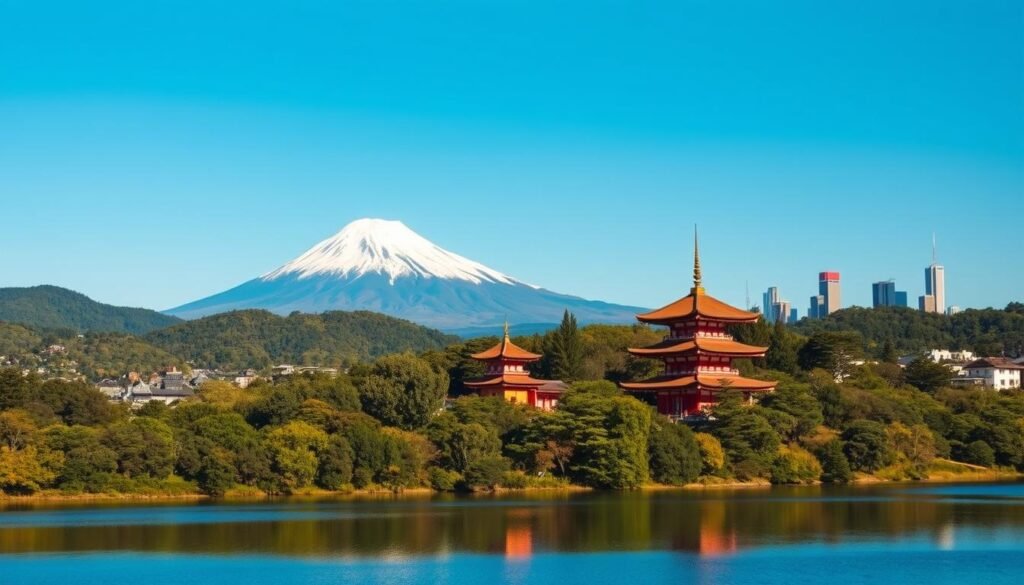Over two million people cross Shibuya every day, a single hint at the scale and energy you can expect when you land here.
I wrote this complete guide so you can plan an efficient, unforgettable trip without guesswork. I lay out a clear list of highlights—Tokyo’s neon, Kyoto’s torii, Osaka’s street food—and quiet regions you can add if you have time.
I explain when to go—spring cherry blossom windows and crisp autumn color—and why booking hotels early widens your options. I also show how I use Japan’s trains to move fast and get the most days on the ground.
Along the way I cover safety, etiquette, and the no-tipping norm so your first days feel smooth, not stressful. For an extended bucket list and route ideas, see my linked notes here.
Key Takeaways
- I map big-city hits and quieter regions so you can balance pace and depth.
- Timing matters: spring and fall are peak windows for weather and views.
- Japan is very safe; tipping is not expected—plan with confidence.
- The rail network makes multi-city travel efficient and predictable.
- Book accommodations early to secure the best options for your trip.
How I Decide the Best Places to Visit in Japan for a First Trip
I plan every route with a simple rule: balance big-city energy and quiet nature so a first time traveler sees both sides. I focus on transit logic, season, and realistic daily pacing so you enjoy each stop.
Balancing cities and off-grid regions
I pick a classic city trio and add one or two quieter regions. This gives cultural density and nature time without long, tiring hops.
Seasonal choice and crowd timing
Peak crowds run late March–mid May and October–late November. Cherry blossoms begin in late March in Tokyo and slightly later in Kyoto. Winter brings powder in Niseko, with Hakuba and Nozawa Onsen as strong alternatives.
- Itinerary choices weigh time, distance and transit complexity.
- Use shoulder seasons when you can to lower crowds and rates.
- I decide on a rail pass only if long-distance legs dominate the plan.
| Season | Crowd | Top region |
|---|---|---|
| Spring (Mar–Apr) | High at blooms | Tokyo / Kyoto |
| Summer | Low–Moderate | Hokkaido / Alps |
| Winter | Varies (ski hubs busy) | Niseko / Hakuba |
This short guide helps you make confident choices so your trip fits your time and interests.
Best Places to Visit in Japan: My Shortlist of Icons and Hidden Gems
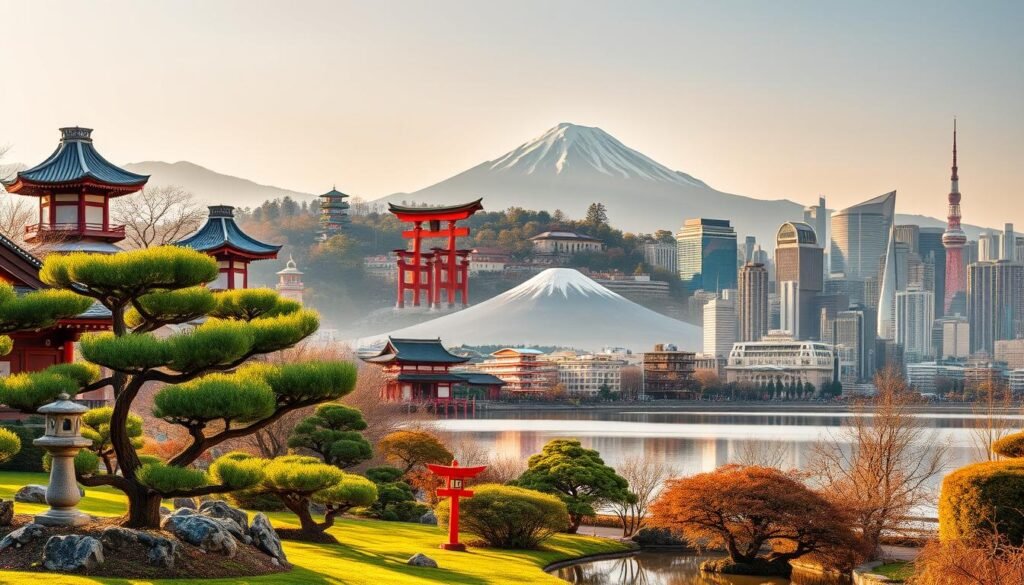
I narrow my shortlist to cities and regions that repeatedly deliver a genuine wow moment.
Core cities: Tokyo (Tokyo Tower, Senso-ji, neon districts), Kyoto (Kiyomizu-dera, Fushimi Inari, Arashiyama Bamboo Grove) and Osaka (Dotonbori, Osaka Castle, takoyaki and okonomiyaki).
Expansions that deepen a trip: Hiroshima’s Peace Park and A‑Bomb Dome, nearby Miyajima with Itsukushima Shrine and tame deer. Hokkaido brings Niseko powder in winter and Furano lavender plus Biei’s Blue Pond in summer.
Alpine and quieter options
The Japanese Alps reward slow travel: walk the Nakasendo, visit Matsumoto Castle, sip at Takayama’s sake breweries and soak in onsen.
- I point to exact neighborhoods and photo spots so your days feel planned, not vague.
- Seasonal notes: lavender in summer, powder in winter, and hot springs when it’s chilly.
- Route tips help you cut transit time and stretch exploration.
| Region | Highlight | Season | Quick win |
|---|---|---|---|
| Tokyo | Senso-ji, neon districts | Year-round | Evening skyline photo |
| Kyoto | Fushimi Inari, Kiyomizu-dera | Spring/Fall | Early-morning torii walk |
| Hokkaido | Niseko, Furano, Biei | Winter / Summer | Lavender fields or powder day |
| Alps | Nakasendo, Matsumoto | Autumn / Winter | Onsen and castle visit |
Tokyo: Neon nights, timeless temples and first-time thrills
A single day in Tokyo can swing from temple quiet to skyline roar without warning. I split my time so a few high-energy nights balance with calm mornings at shrines. That mix gives a fuller experience of the capital in compact days.
Shibuya views and skyline timing
For the scramble, the Starbucks facing the crossing is a classic photo spot. I buy Shibuya Sky tickets about two weeks ahead and aim for the last light. This gets sunsets over the crossing without the worst of the crush.
Asakusa, Tsukiji and arcade nights
Senso-ji is Tokyo’s oldest temple; I go early for quiet and morning light. Nearby, Tsukiji Outer Market still serves fresh sashimi bowls for breakfast—perfect fuel before a museum or stroll.
“Multi-floor arcades like Taito Station, GiGO and Round 1 are a late-night rite—think VR, claw machines and retro cabinets.”
Day trips: Kawaguchiko for Mount Fuji views
Kawaguchiko is the easiest day trip for close mount fuji frames. Direct buses run from Shibuya Mark City and cut transit time so you don’t lose whole days on logistics.
- I split days between modern and heritage so you’ll find variety without rush.
- Flexibility: swap markets, temples and nightlife based on weather and energy.
Kyoto: Torii tunnels, bamboo groves and golden pavilions
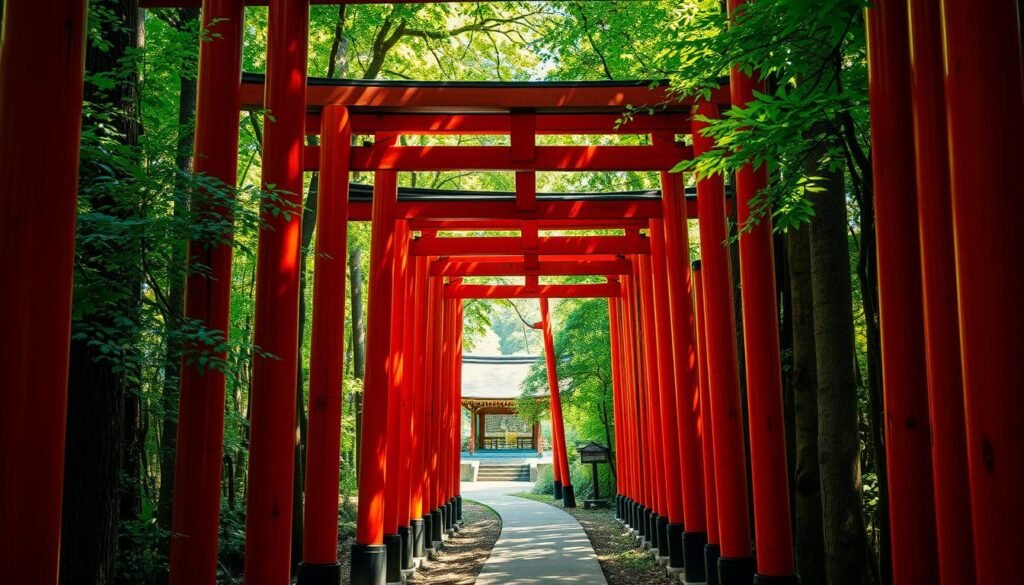
Kyoto feels like a slow film: wooden lanes, torii paths and green bamboo framing quiet moments. I set my schedule so light, crowds and ceremony line up in the right order.
Fushimi Inari beyond the crowds and Arashiyama tips
I go early at Fushimi Inari or hike past the first cluster of gates. That extra time opens long, meditative torii stretches with few people.
Arashiyama’s Bamboo Grove is stunning but busy. I compare it with a quieter grove near Kōdai-ji to reclaim calm and clearer photos.
Kinkaku-ji’s mirror-lake magic and Higashiyama’s old streets
Kinkaku-ji dazzles over its pond at soft morning light; arrive when reflections are sharp and tour buses are still arriving. This shrine is one of Kyoto’s most memorable temples.
From there, I wander Higashiyama’s Ninenzaka and Sannenzaka for traditional shops and snacks that suit a slow stroll.
Tea ceremony in a historic teahouse
I booked a tea ceremony in a 100-year-old teahouse near Kiyomizudera. The traditional japanese setting made the ritual feel personal and deep.
This is the kind of cultural experience that ties a day together. I explain booking tips and what to expect in my guide.
- I recommend simple transit links: short buses and local trains save feet and energy between sights.
- Plan snack stops along Higashiyama for matcha sweets and light meals.
- Cherry blossom timing: Kyoto often blooms a few days after Tokyo—so shift your window accordingly.
| Spot | Best time | Quick tip |
|---|---|---|
| Fushimi Inari | Early morning | Hike past the first gates |
| Arashiyama | Sunrise or late afternoon | Try Kōdai-ji alternative |
| Kinkaku-ji | Morning light | Combine with northern Kyoto stops |
Osaka: Food capital vibes from Dotonbori to Osaka Castle
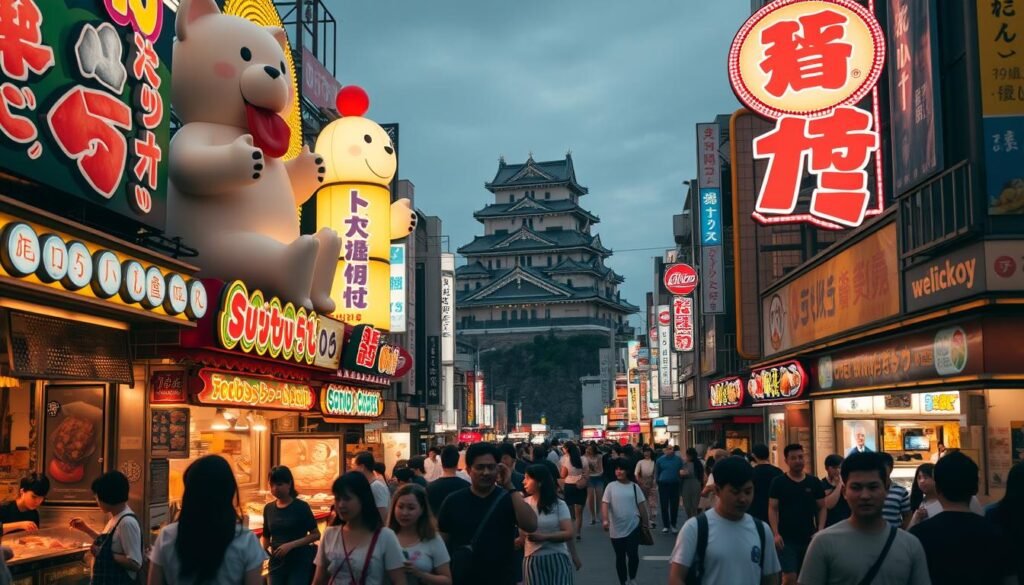
If you love eating as exploration, Osaka will feel like home for adventurous meals. I start in Dotonbori, where the Glico Man and giant food signs lead a route of takoyaki, okonomiyaki and kushikatsu stalls.
My go-to Dotonbori route is a graze-and-go loop: a takoyaki stand, an okonomiyaki counter and a kushikatsu spot by the river. The riverfront energy peaks after dark when neon reflections and laughter fill the air.You can learn more about best-time-to-visit-scotland
Takoyaki, okonomiyaki and late-night riverfront energy
I pair a morning at Osaka Castle with snack detours through nearby markets. The castle gardens shine during cherry blossom season, offering clear photo angles and calm contrast to the downtown rush.
“Osaka earns its food capital reputation through warm stalls, bold flavors and easygoing bars.”
I use Osaka as a convenient base for Kansai day trips and move fast between hubs—Namba, Umeda and the castle area—on foot or by short subway rides.
- I flag English menus at tourist spots; elsewhere, ordering by sight is part of the fun.
- Wrap your night with a late stroll along Dotonbori; that walk explains why I keep returning to this city.
Mount Fuji and Fuji Five Lakes: Postcard views and seasonal festivals
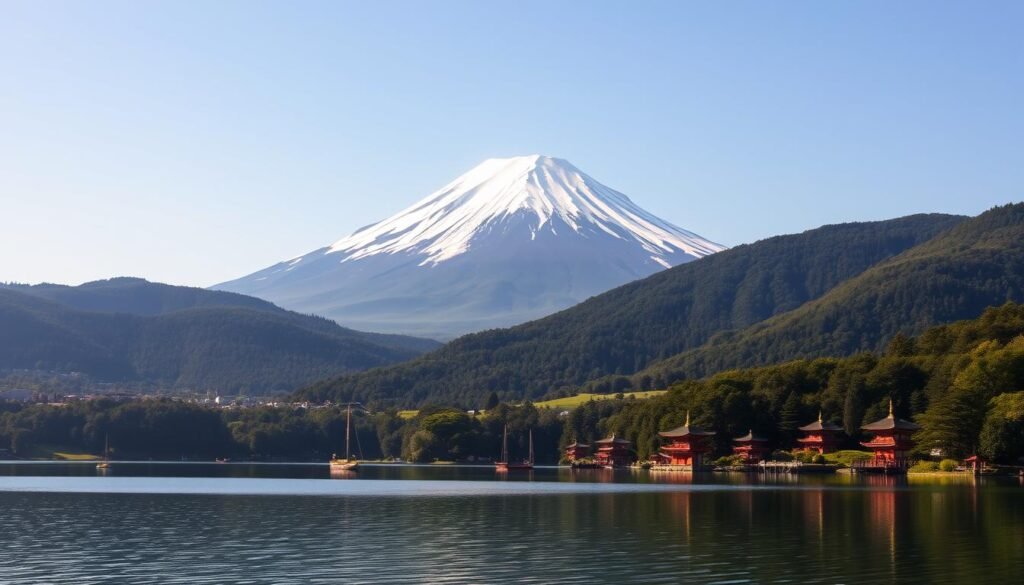
Mount Fuji’s silhouette changes with light, and timing makes the difference between a snapshot and a lifelong memory.
Chureito Pagoda’s classic frame
Chureito Pagoda gives that iconic shot: a five‑storied pagoda set against the mountain. I go just after sunrise and climb the stairs before tour buses arrive.
That early window often means clear air and fewer people. If clouds roll in, I shift vantage points around the lake for safer photo odds.You can learn more about best-time-to-visit-new-orleans
Fuji Shibazakura Festival and timing
The Shibazakura Festival paints fields pink in spring with Fuji behind them. I plan photos for golden hour when the blooms glow and the sky softens.
Direct buses run from Shibuya Mark City to Kawaguchiko, making a high‑yield day trip easy. For better chances, I stay one or two nights in the Five Lakes area.
- Transit: check bus timetables and buy tickets early for peak season.
- Vantage points: Chureito, Oishi Park, and Lake Kawaguchi offer different foregrounds.
- Backup: rainy-day plan—onsen, local sake tasting, or the Itchiku Kubota Museum.
- Packing: layered clothing, waterproof shoes, and a lightweight tripod.
| Plan | What I do |
|---|---|
| Half-day | Early bus to Kawaguchiko, quick Oishi Park stop, return by evening |
| Full-day | Sunrise at Chureito, festival fields, lake viewpoints, overnight for a second morning |
Hiroshima and Miyajima: Reflection, resilience and floating torii
![]()
I approach Hiroshima as a place for thoughtful pauses, then an easy ferry hop takes me into a softer, shrine-lined world.
Peace Memorial Park and A-Bomb Dome perspective
I spend focused time at the Peace Memorial Park, moving between the museum and quiet outdoor memorials.
The A‑Bomb Dome is a sobering frame that asks you to slow down and reflect. I mix museum depth with a walk by the river to balance emotion and clarity.You can learn more about best-time-to-visit-glacier-national-park
Miyajima’s shrine, deer and practical tips
The short ferry takes under an hour; I prefer an overnight so I see the shrine at low light and again at dusk, when the torii can look like it floats.
- Watch tides for the best Itsukushima Shrine photos and pick Otorii viewpoints at sunrise or sunset.
- Deer roam near the shrine—observe respectfully and don’t feed them.
- Ferry schedules and luggage lockers at the pier make an easy day trip or overnight; buy return tickets when you arrive if you want peace of mind.
- Back in the city, try Hiroshima-style okonomiyaki and consider an onsen detour if you need a calm soak after heavy museums.
Two-day split: Day 1 — memorial park, museums and okonomiyaki in the evening. Day 2 — morning ferry, shrine and island trails, return late or stay another night for quieter hours. For a detailed two-day outline see my two-day Hiroshima + Miyajima plan.
Hokkaido: Summer lavender and winter’s legendary powder
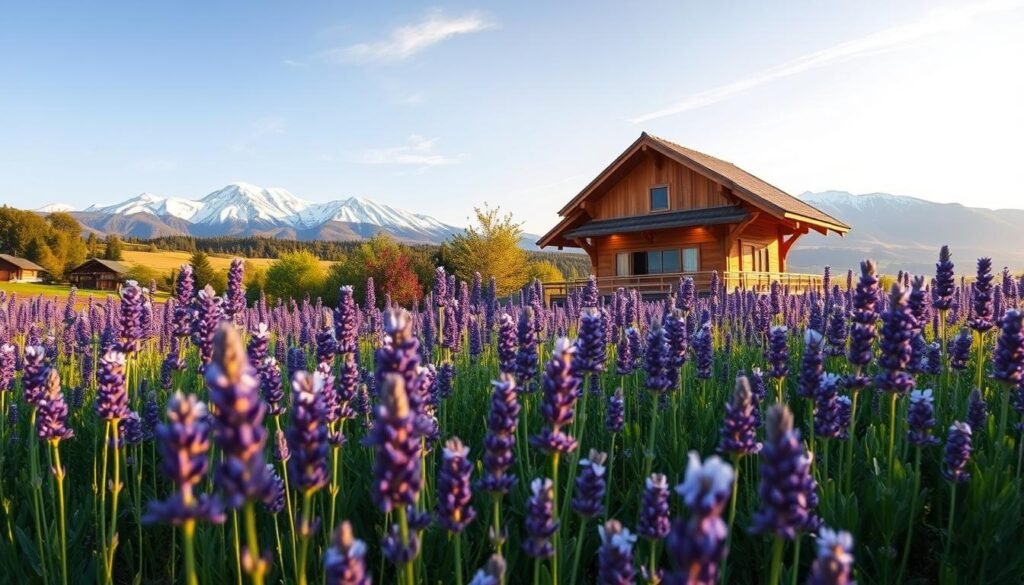
From lavender ridgelines to world-famous powder, Hokkaido rewards time on the ground. I split my days between snow and slow‑season color so you get both adrenaline and calm.
Niseko’s JaPOW and comparing ski bases
Niseko is famed for some of the world’s lightest powder, and I aim for multiple days there to stack reliable runs. Other winter options I use as alternatives include Hakuba, Myoko Kogen and Nozawa Onsen.
Summer loop: Furano, Biei and Otaru
In summer, Furano’s lavender and Biei’s Blue Pond create vivid, low‑effort photo stops. I add Otaru’s canal for atmosphere and seafood dinners; the town feels like home after a day of fields.
“Plan at least three full days for powder hunting and two to three for summer color if you want breathing room.”
- Onsen pairings: finish slope or hike days with a soak—onsen bring warmth and recovery.
- Car or car‑free: rail links cover hubs, but a rental makes reaching remote spots easier in summer.
- Food stops: ramen, fresh seafood and dairy soft-serve are regional highlights I never skip.
| Activity | Suggested days | Base |
|---|---|---|
| Powder skiing | 3–5 days | Niseko |
| Summer color loop | 2–3 days | Furano / Biei |
| Canal town stay | 1 day | Otaru |
Packing tips: for deep winter bring layered thermal gear and waterproof boots; in summer, pack light layers, a wind jacket and good sunscreen.You can learn more about best-countries-to-visit
The Japanese Alps: Castles, onsens and storybook towns
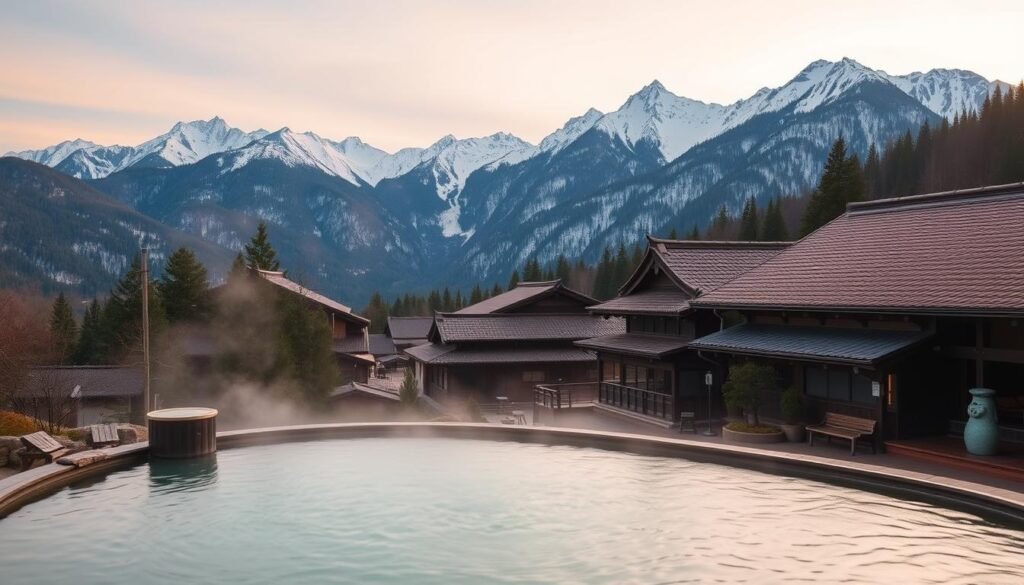
The Japanese Alps hold small towns that feel lifted from a storybook and a slow rhythm that fits long walks. I link black‑walled Matsumoto Castle with Takayama’s Sanmachi Street for a perfect two‑day pairing.
Matsumoto views and Takayama breweries
Matsumoto’s “Crow Castle” gives alpine views from the top floor—great for clear morning photos of rooflines and reflections. In Takayama I sip at traditional sake breweries along old wooden lanes and learn about local methods.
Nakasendo trails and soothing hot springs
I outline an easy Nakasendo segment: a low‑elevation walk between preserved post towns, reachable by bus and local train. Trailheads and towns are dotted with natural hot springs and onsen where I soak after hiking.
- Transport: frequent trains and buses keep mountain travel simple without a car.
- Food: try soba, Hida beef and local sweets to fuel your days.
- Photo tip: aim for golden hour at castle ponds and old‑town lanes for softer light.
- Schedule: I usually dedicate 3–4 days here on a two‑week travel plan—enough time to hike, drink sake and relax.
| Stop | Highlight | Best time | Transit note |
|---|---|---|---|
| Matsumoto | Crow Castle, alpine views | Morning | Direct train from Nagano |
| Takayama | Sanmachi Street, sake tastings | Late afternoon | Bus or limited express from Nagoya |
| Nakasendo (Magome–Tsumago) | Preserved post towns, gentle trail | Day hike | Local bus links and luggage forwarding |
| Onsen stops | Soothing natural hot springs | Evening | Near trailheads and town centers |
Kanazawa: The “Kyoto of the North” with samurai streets
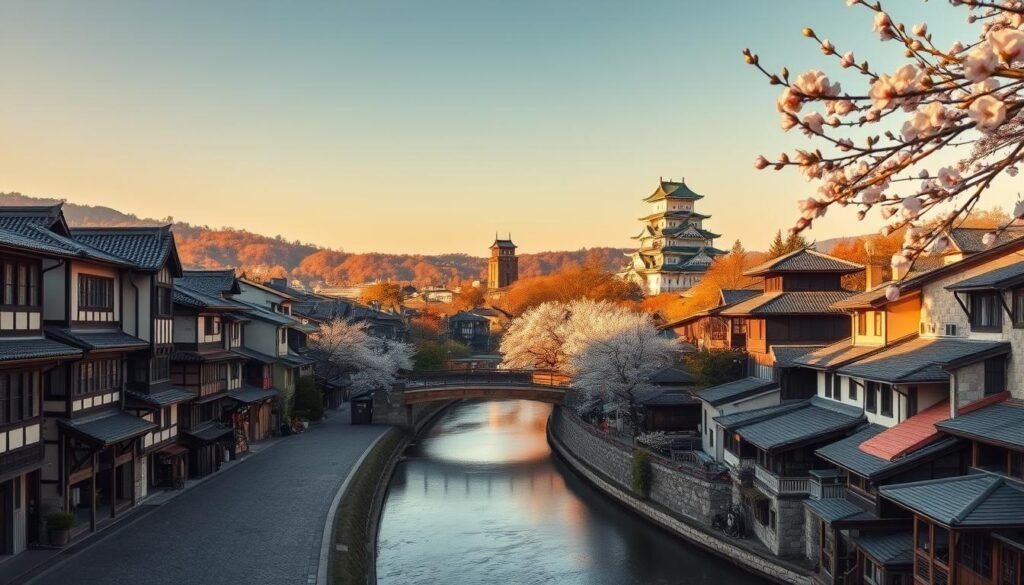
A day in Kanazawa moves from serene gardens to narrow teahouse lanes with effortless flow. I plan my time so morning light meets Kenroku-en and the city unfolds at a gentle pace.
Kenroku-en, Higashi Chaya and Nagamachi rhythms
Kenroku-en is striking in every season. In winter you’ll spot yukitsuri supports; in spring the blossoms soften paths.
I start there for calm reflections, then walk toward Higashi Chaya where tea houses and narrow lanes invite pauses.
Nagamachi’s samurai residences feel like a short time‑warp. I pair old homes with nearby modern galleries and cafés for contrast.
What I do and what I’ll find
I set a full day that flows from garden morning to afternoon tea and a temple stop or two. This keeps the day rich without rushing.You can learn more about best-places-to-visit-in-italy
- I highlight simple walks that link districts so you see more with less transit.
- I note local bites—fresh seafood and sweets that feel like home after a long walk.
- I explain how to book low‑key teahouse performances and where temples add cultural depth.
If you fall for Kanazawa, extend your stay with a museum afternoon or a relaxed evening at a neighborhood izakaya. This city blends culture and modern dining in a compact, walkable layout that rewards slow exploration.
Shikoku and Kyushu: Off-the-beaten-path culture and nature
Shikoku and Kyushu feel like a welcome side trip: unexpected rituals, steaming baths and active volcano views.
Shikoku is compact and calm. I outline a loop that starts at the Naruto Whirlpools, drops by Kotohira-gu Shrine, then follows the Shimanto River. Stop in Tokushima, Kochi, Takamatsu and Matsuyama for coastal towns, local markets and temple walks.
Kyushu is food-forward and dramatic. I pair Fukuoka’s vibrant food scene with Beppu’s onsen and views of Sakurajima from Kagoshima. Add Nagasaki’s history and Kumamoto Castle for depth.
- I explain hot springs know-how so you choose between public baths and ryokan-style soaks.
- I flag transit links that turn island hops into short, efficient legs.
- Base overnight stays where day trips pay off; a night often turns a good view into a great one.
Quick guide: pick one island for depth or combine both if you have time. Either way, you’ll gain a strong sense of regional life that feels like home after busy city days.
Essential Japan experiences to add to your itinerary
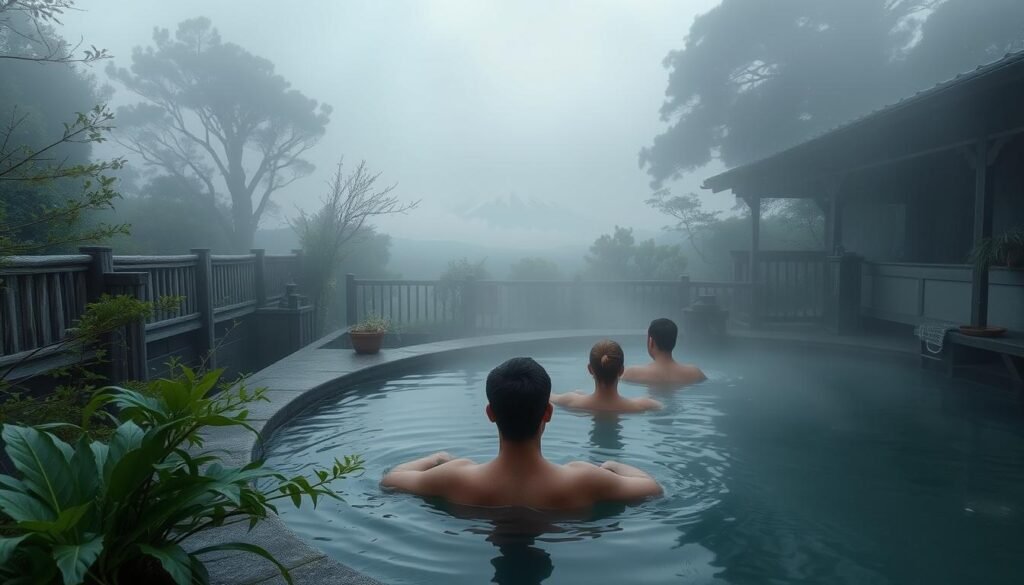
A handful of hands-on experiences will turn a well-planned route into memorable travel days.
Ride the Shinkansen, soak in an onsen and stay in a ryokan
I take the Shinkansen whenever long legs link my cities. The trains run precisely and pair well with an eki-bento for lunch. For Tokyo–Osaka, it’s often faster and less fuss than flying.
Onsen options range from public bathhouses to private in-room tubs at ryokans. Always wash before entering and use the small towel for modesty outside the water. A ryokan stay usually includes a kaiseki dinner—dining at “home” for the night that feels like a small ceremony.
Sumo day, tea ceremony and kitchen-knife shopping
A sumo tournament is ritual-filled and electrifying. I book tickets early, know seating types, and expect long, solemn ring ceremonies between bouts.
In Kyoto I joined a traditional japanese tea ceremony that felt like stepping into a calm, exact world. Look for small-group sessions and hosts who explain etiquette in English if needed.
For knives, Kappabashi (Kitchen Street) in Tokyo is ideal. My way: browse, test weight, then compare prices. Kyoto offers forging classes if you want a hands-on lesson and a custom blade.
Quick checklist
- Book at least one Shinkansen leg and reserve eki-bento timing.
- Schedule a ryokan night with kaiseki and confirm private bath if preferred.
- Buy sumo tickets ahead and arrive before ceremonies start.
- Reserve a tea ceremony slot in Kyoto for cultural immersion.
- Plan knife shopping on a city day; bring a carry plan for sharp items.
| Experience | What I do | Timing | Tip |
|---|---|---|---|
| Shinkansen ride | Reserve seats, bring an eki-bento | Intercity travel | Book peak trains early |
| Onsen & ryokan | Private tub or public bath, kaiseki dinner | Evening stay | Follow washing etiquette |
| Cultural day | Sumo, tea ceremony, knife shopping | Full or half day | Stagger bookings across route |
When to visit Japan: Cherry blossoms, fall colors and winter wonderlands
You’ll notice how season and schedule shape every photo and every crowd. Late March through early April is often the sweet spot for Tokyo’s cherry bloom, with Kyoto following a few days later.
Late March–April timing for Tokyo and Kyoto
I time trips for late March–early April so cherry and temple light line up: Tokyo first, then Kyoto a short window later. That pacing gives me two high-yield cities without racing.
Beat peak-season crowds with early starts
Peak months run March–mid‑May and October–late‑November. I start at dawn, take flexible midday breaks, and use covered markets or museums when lines lengthen.
- Backup plans: gardens, museums, and covered markets if weather changes.
- Winter notes: Hokkaido shines for snow and resorts—swap seasons by destination.
- Pacing a week: stagger early mornings and low‑key afternoons across seven days.
- Watch holidays: Golden Week and national events raise hotel and train demand.
| Season | Highlight | Quick tip |
|---|---|---|
| Spring | cherry blossoms | Arrive early at parks |
| Autumn | fall color | Book trains ahead |
| Winter | Hokkaido snow | Reserve ski days |
Quick guide: watch forecast updates and shift your route one or two days when needed. This small move often saves hours and improves the experience when visiting japan.
Build your first trip: One week, two weeks or a month
Start by choosing one clear anchor city and build days around it so transit stays simple. I give three plug‑and‑play skeletons you can adapt to your pace and flight times.
One week: Tokyo, Kyoto or Osaka highlights
For a tight week I pick a single city as home base and plan two full days for major sights. This keeps travel light and helps you catch cherry blossoms if timing lines up.
Where I slot an onsen: add a night near the Alps or a ryokan outside the city for a calm reset midweek.
Two weeks: Add Mount Fuji or Niseko and a second city
With two weeks I keep one anchor city and add Mount Fuji or Niseko as a 2‑3 day detour. That gives mountain views or powder without constant packing.
I aim for realistic train legs: 2–3 days in each major stop and travel afternoons to avoid platform fatigue.
One month: Major cities plus Tohoku, Hokkaido or Shikoku detours
For a month I map cities and regional detours so the trip balances depth and discovery. I include slow stretches in Tohoku or Hokkaido and a coastal loop on Shikoku.
Tip: plan an onsen night after long travel days and allow extra days when you want to linger in a single city or trail.
- Quick wins: pick one base per week, mix city and nature days, and reserve at least one ryokan night.
- Rail planning: group long legs and use midday buffers so you don’t live on trains.
- Flex: trim or extend the template by swapping a city day for an extra regional night based on flight time and energy.
| Length | Typical stops | Onsen/ryokan slot |
|---|---|---|
| 1 week | Single city + 1 day trip | Night near Alps or local ryokan |
| 2 weeks | City + Mount Fuji or Niseko + 2nd city | After mountain days |
| 1 month | Major cities + Tohoku/Hokkaido/Shikoku | Multiple nights across regions |
Conclusion
A flexible itinerary—anchored cities plus one bold detour—keeps travel days rewarding and restful.
I’d stitch Tokyo–Kyoto–Osaka as your core, then add Mount Fuji/Kawaguchiko, Miyajima, Hokkaido, Kanazawa or the Alps depending on time and taste.
Think food streets, temples, castles, hot springs and nature as the experience categories that make a trip japan feel complete.
Practical notes: Japan is safe, carry cash outside big cities, trash cans are rare, and apps like Google Maps or NAVITIME make navigation simple.
Use this list to build or tweak an itinerary from one week to a month. Choose the mix that fits your life now—you’ll leave room for another trip, because Japan rewards curiosity and small surprises.


